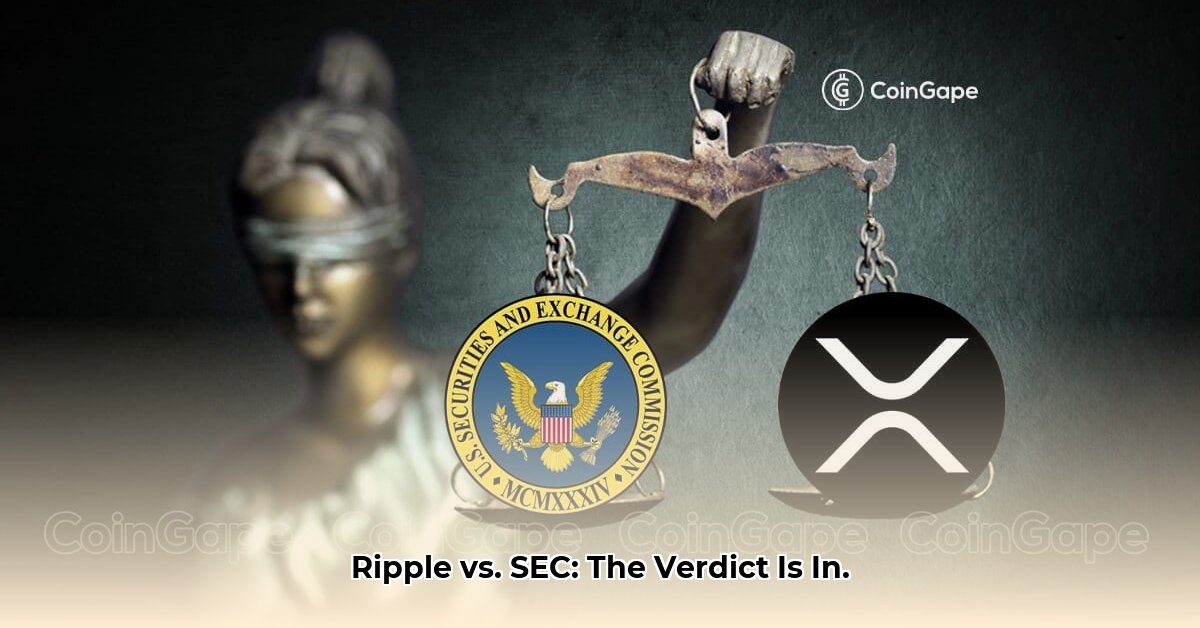
The protracted legal battle between the Securities and Exchange Commission (SEC) and Ripple Labs, while seemingly concluded at the district court level, continues to reverberate throughout the cryptocurrency ecosystem. The ongoing appeal process is a watershed moment, highlighting fundamental disagreements on applying established securities laws to the nascent world of digital assets. The implications are profound, impacting market stability, innovation, and investor protection. This is not merely a legal dispute; it's a defining event shaping the future of cryptocurrency.
Deciphering the Core Conflict: The Stakes Involved
This legal drama centers on the classification of XRP, Ripple's cryptocurrency. The SEC contends that all XRP sales constituted unregistered securities offerings, violating federal law. Ripple counters that many XRP sales, particularly those conducted through automated, programmed mechanisms, do not meet the legal definition of a security under the Howey Test. Both parties accept the Howey Test's relevance, but their interpretations diverge significantly. However, this dispute extends beyond XRP; it establishes a precedent for classifying all digital assets under US law, potentially reshaping the crypto landscape for years to come. Will this landmark case clarify regulatory ambiguity, or will it exacerbate uncertainty?
Understanding the Howey Test: Applying Old Law to New Technology
The Howey Test, a cornerstone of US securities law, determines whether an offering constitutes a security. It assesses whether an investment of money in a common enterprise exists, with a reasonable expectation of profits derived from the efforts of others. Applying this established legal framework to the revolutionary decentralized nature of blockchain technology presents formidable challenges. The distributed nature of XRP distribution and the dynamic crypto market complicate the application of the Howey Test. The case compels a legal system originally designed for traditional finance to grapple with a novel technology. How will the legal system adapt to this rapid technological evolution, and what impact will this have on the crypto space?
Ripple's Defense and the SEC's Case: Contrasting Perspectives
Ripple's defense rests on differentiating between various XRP sales. They argue only specific XRP sales (institutional sales to large investors) meet the Howey Test criteria. The SEC, conversely, maintains that all XRP sales, including programmatic ones, represent illegal unregistered securities offerings. This divergence emphasizes the challenges of applying traditional legal frameworks to the unique, decentralized nature of cryptocurrencies. The ongoing legal proceedings highlight the ongoing struggle to reconcile existing legal structures with innovative technologies.
The Hinman Emails: Evidence or Red Herring?
The SEC's internal communications, frequently cited as the "Hinman emails," have become unexpectedly central to the case. These emails reveal internal SEC disagreements on classifying certain cryptocurrencies as securities. However, their legal weight remains fiercely debated. This adds further complexity to an already intricate legal battle. Will these emails significantly influence the appeals court's decision? This question remains a key focus as the case unfolds. What is the weight of internal contradiction in the face of established legal precedent?
Navigating the Uncertainty: Implications for Stakeholders
The ongoing litigation fuels considerable uncertainty, affecting various groups within the crypto space. The potential short-term and long-term impacts on key players are outlined below:
| Stakeholder | Potential Short-Term Impacts | Potential Long-Term Impacts |
|---|---|---|
| Cryptocurrency Exchanges | Altered listing policies; heightened scrutiny | Increased regulatory pressure; development of robust compliance programs |
| Cryptocurrency Projects | Enhanced internal compliance reviews; modified funding strategies | Broader transparency in project funding; increased regulatory engagement |
| Investors | Increased market volatility; demand for thorough due diligence | More informed investment choices; better comprehension of legal risks |
| SEC | Refined approach to crypto regulation | Creation of more comprehensive crypto regulations; improved enforcement capabilities |
| Ripple | Managing the appeal; lobbying for regulatory clarity | Advocacy for clearer regulatory frameworks; continued innovation within regulatory parameters |
Assessing the Risks: Preparing for Future Challenges
Significant risks persist following the SEC vs. Ripple case. Understanding and mitigating these risks are paramount for navigating the crypto space:
| Risk Factor | Potential Short-Term Risk | Potential Long-Term Risk | Mitigation Strategies |
|---|---|---|---|
| SEC Appeal Outcome | High | Moderate | Strong legal counsel; proactive regulator engagement; comprehensive risk management |
| Regulatory Uncertainty | High | Moderate | Robust compliance programs; industry lobbying; inter-industry collaboration |
| Market Volatility | High | Moderate | Diversified investment portfolios; sophisticated risk management; well-informed investment decisions |
| Technological Advancements | Low | Low | Continuous technology monitoring; proactive adaptation |
The SEC vs. Ripple case transcends a single company's fate. It will significantly impact cryptocurrency project structures and the legal perception of digital assets. The ensuing legal interpretation will define future US cryptocurrency regulation. This case serves as a watershed moment in the evolution of cryptocurrencies, creating lasting impacts on the industry.
1